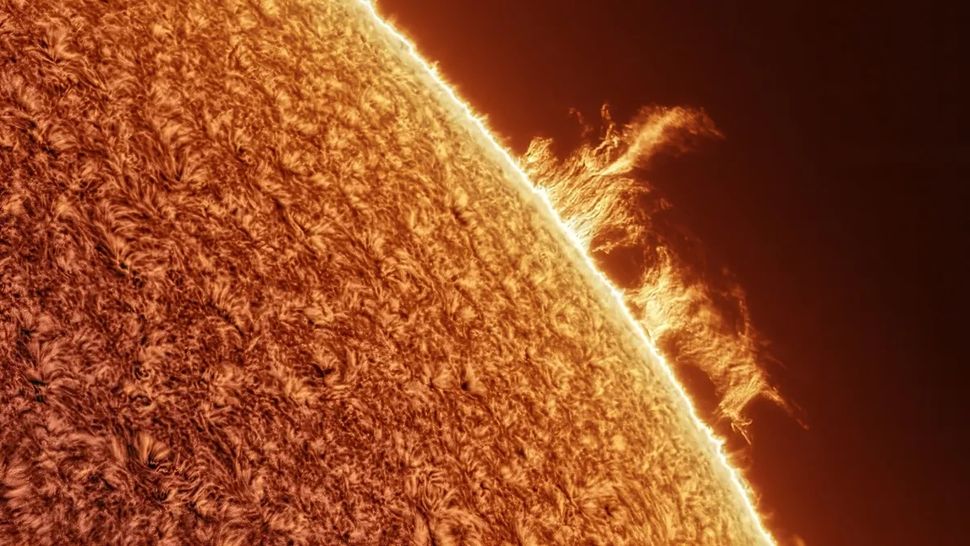Could we turn the sun into a gigantic telescope?
By Paul Sutter published 60 minutes ago
Using a phenomenon known as gravitational lensing, it might be possible to use the sun as a gigantic telescope to peer deep into space.

A close-up of streaks of fire erupting from the sun
A photograph of the sun taken by astrophotographer Mark Johnston, a NASA solar system ambassador and vice president of the Phoenix Astronomical Society, on Aug. 29, 2024. (Image credit: Mark Johnston)
We have some incredibly powerful telescopes that have given us spectacular views of the cosmos and allowed us to look back to the early days of the universe. These observatories, such as the James Webb Space Telescope (JWST), are amazing feats of engineering that have required billions of dollars and decades of work.
But what if we could access an even better telescope that already exists? This wouldn't be a typical telescope. It wouldn't even come with a lens. But it would be by far the most powerful telescope we'd ever built.
This telescope would use the sun itself.
To give some perspective on how powerful a sun-based telescope could be, consider JWST. With a mirror that's 21.3 feet (6.5 meters) in diameter, JWST is capable of achieving a resolution of around one-tenth of an arcsecond, which is about 600 times better than the human eye. At that resolution, the telescope could see the details on a coin placed 25 miles (40 kilometers) away from it or pick up the pattern of a regulation soccer ball sitting 342 miles (550 km) away.
Another example is the Event Horizon Telescope, which is really a network of individual instruments scattered across the globe. By carefully coordinating its elements, the telescope has given us impressive images of the disks of gas surrounding giant black holes. To achieve that, it managed an impressive resolution of 20 microarcseconds. At that resolution, the telescope could spot an orange sitting on the surface of the moon.
More:
https://www.livescience.com/space/the-sun/could-we-turn-the-sun-into-a-gigantic-telescope
